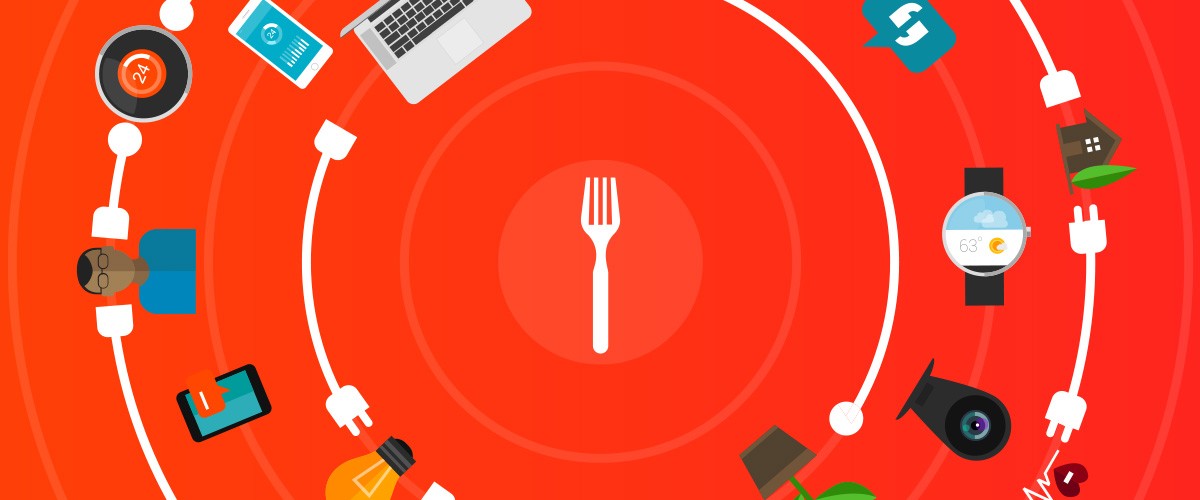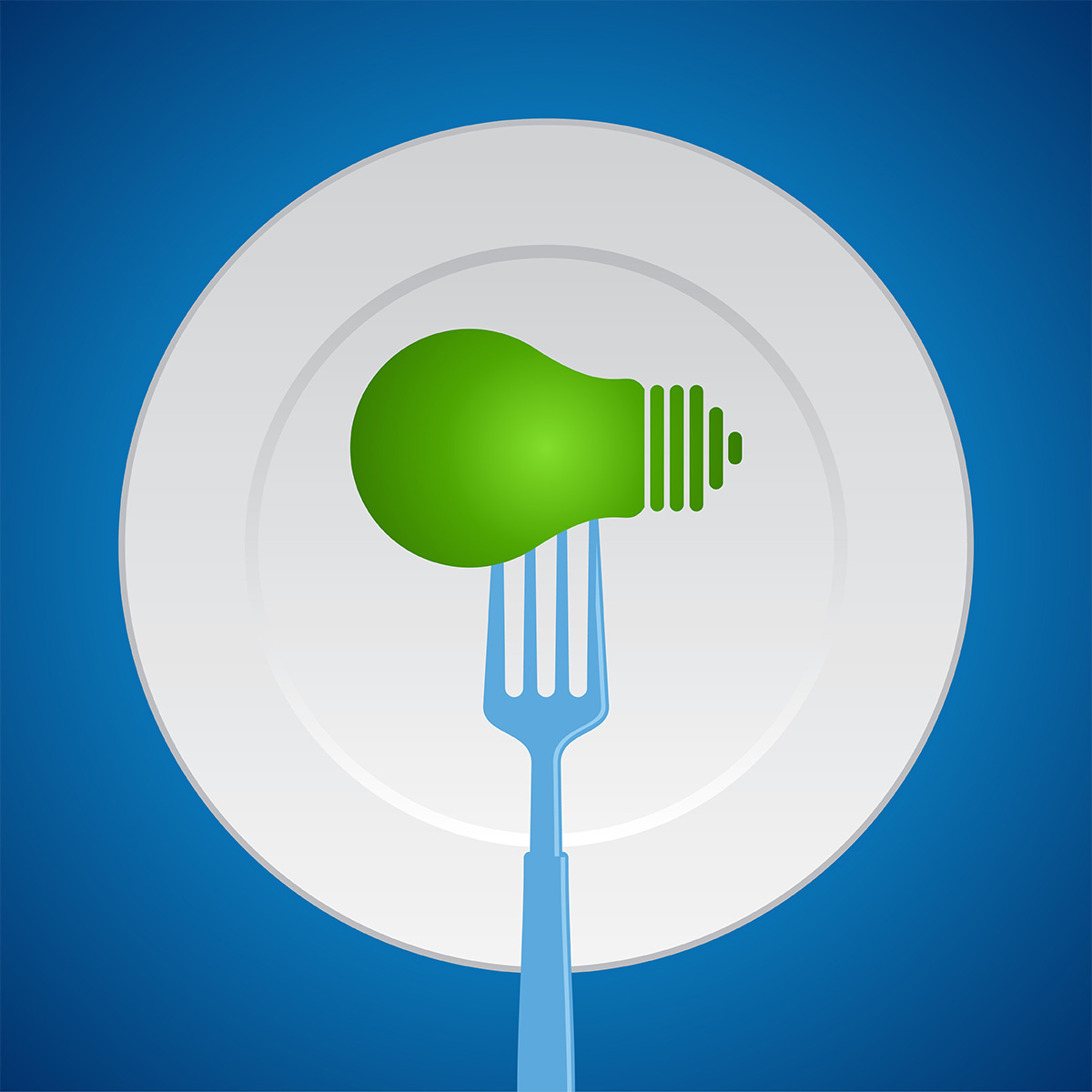
Here Comes The Screenless Fork
Innovating Innovation
The “Internet of Things” is changing everything – even innovation. In Product Development, the demand to make almost every conceivable object “smart” or “connected” requires developers to approach design in revolutionary ways. The “Internet of Things” is breaking new ground in the way humans interact with the most basic objects – forcing innovators to reinvent the wheel (literally and figuratively) in design and process.
Increasingly, clients ask our designers at bb7 to incorporate sensors and radios into everyday objects, allowing them to interconnect. These new “smart” objects are part of the fabric of the “Internet of Things.” As early implementers, designers recognize that computing and radio communication technologies are now mature enough to overlay an information dimension onto previously static objects. Take, for example, a fork that senses food and the activity of eating to improve the experience and simplify the task.
For connected products like the screenless fork, our initial work considers the technical feasibility of the sensors and radios, and their integration with a suitable computing stack to create a system. Requirements, analysis and design engineering are the normal process steps, followed by prototyping and testing.
Along with demonstrating technical feasibility, multidisciplinary design teams tackle the tasks of understanding the product from a user-centered standpoint. Industrial designers, interaction designers, and human centered design researchers work together to harmonize the new possible functions for these products, meeting the needs and goals of users. Feature sets and product functions are conceptualized and evaluated against users’ possible desires and expectations. Analyses, models, and prototypes of product concepts are synthesized, compared, and refined. This is standard innovation methodology.
But, somehow putting a radio into a familiar product changes things up a little. The familiar innovation methodology itself needs to be revised to meet these products’ surprising needs. Although these products might appear exactly as their predecessors, they provide new, surprising-but-invisible functionality. This presents a break from traditional task-referenced, user-centered design. Suddenly, traditional industrial design and Human Computer Interaction (HCI) norms do not provide sufficient guidance.
What’s the Play without a Display?
HCI standards mainly need a display but these new products may not have displays. Basic HCI principles like responsiveness, feedback, task analysis, consistency, reversibility, recognition and tolerance are still valid for these new products, but they are not fully informative for products that present unfamiliar feedback to users — if any feedback at all. The existing norms of HCI depend on close interactivity between the computer and the user.
Although new connected products will indeed manifest interaction between user and computer, these interactions may be silent and unobservable. Users will need clarity about the hidden, silent activities of their products and surroundings, which HCI norms do not yet provide.
Familiar but Different
Traditional task-referenced user-centered approaches to addressing user needs may also fall short. The new functions afforded by invisibly sensor-laden and connected but otherwise familiar-looking products may not follow smoothly from the functions of predecessor products.
Interaction Design for New World of Product Interactions
Refined gestural interaction between users and technology remains in infancy compared to traditional Graphical User Interfaces (GUIs). Handheld, screenless, everyday objects like knives and forks will accelerate the need for new and meaningful norms of gestural communication between people and objects.
The Fork that Gathers Food and Data
The connectedness of some products may serve no obvious purpose to users at all. For example, some products may just deploy sensors invisibly supporting an analytics system. Users have more or less accepted that websites and apps often have the dual purpose of meeting users’ needs while collecting information. High integrity products must be clear and explicit about this dual purpose. New challenges will arise for products whose information gathering capability may be completely hidden (like a fork that inconspicuously gathers data about eating habits for market research).
The emergence of connected products will lead to the augmentation of traditional design approaches with revolutionary new ones. HCI could become Human Computer Object Interaction (HCOI) in surprising ways.
While these developments are ongoing, everyday design will evolve in a combination of traditional and new ways.
Innovating Innovation Methodologies
Existing fast-track incremental methods like user observation, task analysis, and best practice HCI will not be good enough. Designers will have to discover emergent, new user goals and related tasks. These discoveries will be more imagination-driven than traditional user-responsive ones. Here, time becomes an issue: Imagination-driven products tend to need lots of refinement.
Wanted: More Prototyping
Designers will have to plan extra prototyping and usability test cycles, so they can discover and refine the opportunities afforded by connected technologies in products. Importantly, they’ll have to explore and address users’ new relationships with these products. Once radios go inside, familiar objects may have completely new meanings to users, which will present the opportunity for increased functionality.
Teaching a Fork to Speak: New Design Language
We’ll need to develop a design language to signify products’ new but hidden connected capabilities. These may be power or data ports, antennas, sensor bulges, or graphics logos to express the existence of certain capabilities. How can a design team develop a fork that communicates its new functionality (e.g. calorie count or nutritional data procurement) without sacrificing its “forky” design and use? Many new gestural approaches will be tried and some winners will emerge. In time, language norms will solidify, initially to communicate the simple existence of otherwise hidden connected technologies. Eventually, there will be so many products with sensors and radios that language norms will evolve to communicate beyond the mere existence of connection to focus once again on functions, outcomes, and feelings.
When products afford revolutionary capabilities, the rules of design must adapt. The era of new smart objects is here. These smart objects will demand the development of revolutionary design methods, just as did the computer GUI in the 1970s and the smartphone of the 2000s.
Maybe the screenless fork won’t revolutionize design, but a simple, everyday object is likely to change the future. As the pace of technology development accelerates, the pace of design methodology accelerates too.
